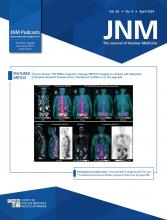Abstract
For over 40 years, FDG has been the dominant PET tracer in neurology, cardiology, inflammatory diseases and, most particularly, oncology. Combined with the ability to perform whole-body scanning, FDG has revolutionized the evaluation of cancer and has stifled the adoption of other tracers, except in situations where low avidity or high background activity limits diagnostic performance. The strength of FDG has generally been its ability to detect disease in the absence of structural abnormality, thereby enhancing diagnostic sensitivity, but its simultaneous weakness has been a lack of specificity due to divergent pathologies with enhanced glycolysis. Radiotracers that leverage other hallmarks of cancer or specific cell-surface targets are gradually finding a niche in the diagnostic armamentarium. However, none have had sufficient sensitivity to realistically compete with FDG for evaluation of the broad spectrum of malignancies. Perhaps, this situation is about to change with development of a class of tracers targeting fibroblast activation protein (FAP) that have low uptake in almost all normal tissues but high uptake in diverse cancer types. In this review, the development and exciting preliminary clinical data relating to various FAP-specific small-molecule inhibitor (FAPI) tracers in oncology, will be discussed along with potential non-oncological applications.
- Molecular Imaging
- PET/CT
- Radiochemistry
- PET
- fibroblast activation protein
- oncology
- radiochemistry
- theranostics
- Copyright © 2020 by the Society of Nuclear Medicine and Molecular Imaging, Inc.







